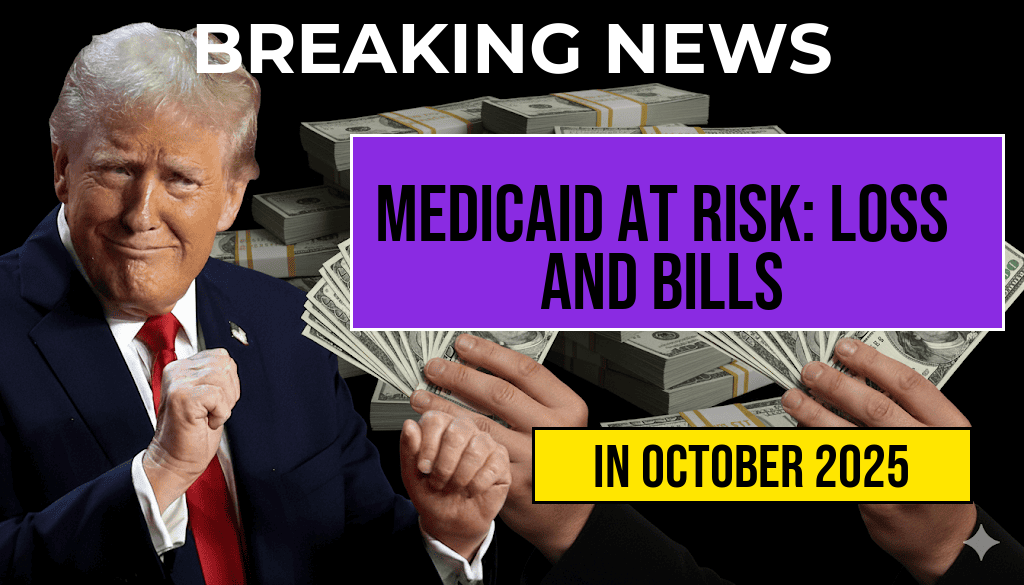Medicaid Faces Potential Threat as CBO Warns of Millions at Risk of Losing Coverage Due to $1,000 Emergency Room Bills
Recent analysis from the Congressional Budget Office (CBO) indicates that changes in healthcare policies could result in approximately 5 million Americans losing Medicaid coverage over the next year, primarily driven by the financial burden of unexpected emergency room bills exceeding $1,000. The report raises concerns about the stability of Medicaid enrollment, especially among vulnerable populations who rely heavily on the program for essential health coverage. Experts warn that the combination of rising healthcare costs and stricter eligibility enforcement could leave many unable to afford costly emergency care, ultimately pushing some into financial hardship or delaying necessary treatment. As policymakers debate potential reforms, advocates emphasize the importance of safeguarding access to healthcare for low-income Americans amid these looming risks.
Understanding the CBO’s Projection
The CBO’s latest assessment highlights a complex interplay of factors threatening Medicaid continuity. Key among these is the possibility that increased out-of-pocket expenses for emergency services—specifically bills exceeding $1,000—may lead some enrollees to lose coverage due to income or administrative barriers. The report estimates that roughly 10% of Medicaid recipients encounter bills of this magnitude annually, and without targeted intervention, many could face coverage gaps.
According to the CBO, the primary drivers include:
- Higher deductibles and copayments imposed by some states
- Administrative hurdles in renewing or maintaining eligibility
- Economic pressures from inflation, which impact healthcare affordability
“When individuals face unexpected medical expenses, especially emergency care, the financial shock can be overwhelming,” said Dr. Lisa Carter, a health policy analyst. “If these costs aren’t managed effectively, they can inadvertently cause people to lose Medicaid eligibility, even if they remain low-income.”
The Impact on Vulnerable Populations
Medicaid primarily serves low-income families, seniors, and individuals with disabilities. For many of these groups, access to affordable emergency care is vital to prevent health deterioration and financial ruin. The prospect of facing bills over $1,000 can be daunting, especially for those on fixed incomes or with limited savings. Data from the Kaiser Family Foundation suggests that nearly 20% of Medicaid enrollees have experienced difficulties paying medical bills in the past year, underscoring the financial fragility within this demographic.
Furthermore, the threat of losing coverage due to inability to pay or administrative issues could exacerbate health disparities. When individuals delay or avoid emergency care because of cost concerns, the consequences can be severe, leading to worsened health outcomes and increased long-term costs for the healthcare system.
Policy Debates and Legislative Responses
Amid warnings from the CBO, policymakers are debating potential strategies to preserve Medicaid coverage, particularly in the face of rising healthcare expenses. Some proposals include:
| Policy Measure | Potential Impact |
|---|---|
| Enhanced eligibility verification | Reduce inadvertent dis-enrollments due to administrative errors |
| Caps on out-of-pocket costs for emergency services | Limit financial burden on low-income enrollees |
| Automatic renewal processes | Minimize coverage gaps caused by paperwork delays |
Some states have already begun adjusting policies to better support enrollees, but federal action remains a key factor in ensuring nationwide stability. The Centers for Medicare & Medicaid Services (CMS) continues to monitor the situation closely, emphasizing that maintaining coverage is essential for public health and fiscal sustainability.
The Broader Context of Healthcare Affordability
The warning about potential coverage losses coincides with ongoing debates over healthcare costs nationwide. Rising emergency room bills are a symptom of broader systemic issues, including high drug prices, hospital charges, and insurance design. According to the Wikipedia entry on healthcare in the U.S., these factors contribute to a complex and often costly healthcare landscape that disproportionately impacts low-income Americans.
Advocates argue that protecting Medicaid is a crucial step toward reducing health disparities and ensuring that emergency care remains accessible and affordable. They emphasize that preventive care and timely treatment can mitigate long-term costs and improve health outcomes, especially in underserved communities.
Looking Ahead
The CBO’s projection underscores the importance of proactive policy measures to prevent millions from losing essential health coverage. As legislative discussions continue, stakeholders are calling for targeted solutions that address both the administrative barriers and financial barriers faced by Medicaid enrollees. Ensuring that emergency room bills do not become a gateway to coverage loss will require coordinated efforts among federal, state, and local agencies, as well as support from healthcare providers and community organizations.
For individuals and families navigating Medicaid, awareness of upcoming policy changes and available assistance programs will be vital. Resources such as Medicaid.gov provide guidance on enrollment, renewals, and financial protections, helping to safeguard coverage amid uncertain times.
Frequently Asked Questions
What is the main concern regarding Medicaid in the recent CBO report?
The CBO warns that millions of people could lose their Medicaid coverage due to potential $1,000 emergency room bills that many may be unable to afford.
How might emergency room bills impact Medicaid beneficiaries?
High $1,000 emergency room bills could lead to financial hardship for Medicaid beneficiaries, potentially resulting in loss of coverage if they are unable to pay or if policies change.
What policies are contributing to the potential loss of Medicaid coverage?
Recent policy changes and proposed budget cuts could lead to< reduced eligibility and disenrollment, putting millions at risk of losing their Medicaid benefits.
Who is most at risk of losing Medicaid coverage according to the CBO?
Low-income individuals and families who rely on Medicaid for healthcare coverage are most at risk, especially those facing unexpected expenses like emergency room bills.
What are the potential consequences if millions lose Medicaid coverage?
If millions lose Medicaid coverage, it could lead to increased healthcare costs for hospitals and the government, as well as worse health outcomes for vulnerable populations.

Leave a Reply